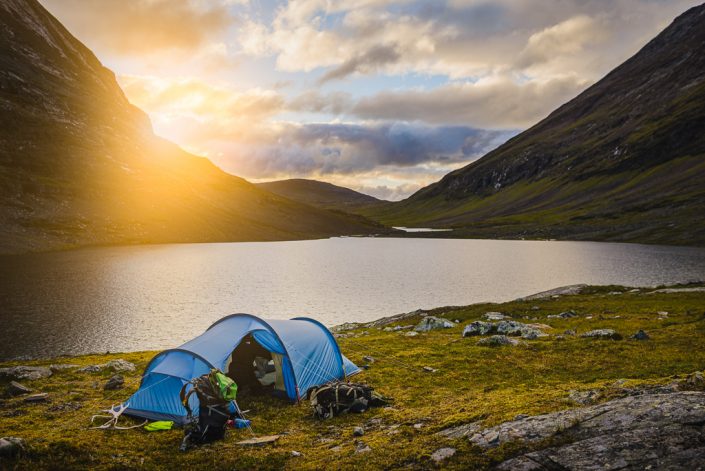

Tent Buying Guide: Is a Tunnel, Dome, or Other Type Best for You?
Are you considering buying a new tent? Our outdoor expert Mikko shares tips on what to consider when choosing the right tent.

Buying a tent is one of the most significant investments for a hiker. When making a purchase decision, it’s important to carefully consider what type of tent you want. Factors influencing the choice of the tent include its intended use, planned locations, the season it will be used, the number of occupants, personal preferences, weight, and price.
A good tent is durable, resists wear and tear, and retains its resale value.
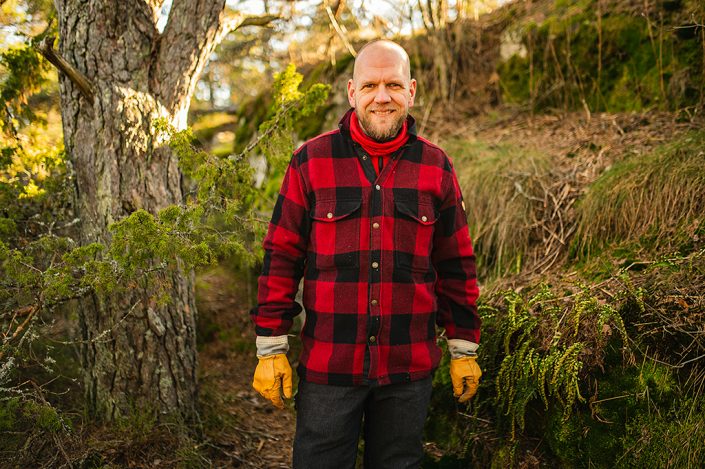
Mikko works as an outdoor expert at our Kuninkoja store. With nearly 20 years of experience assisting hikers, Mikko is likely a familiar face to many of our long-time customers. He also serves as the hiking specialist for our guide content.
MIKKO’S TIPS FOR BUYING A TENT
What activity are you buying a tent for?
Choose the right tent for the right activity. Our tent selection is divided into four categories: camping and family tents, backpacking tents, hammocks, as well as tarps and lavvus.
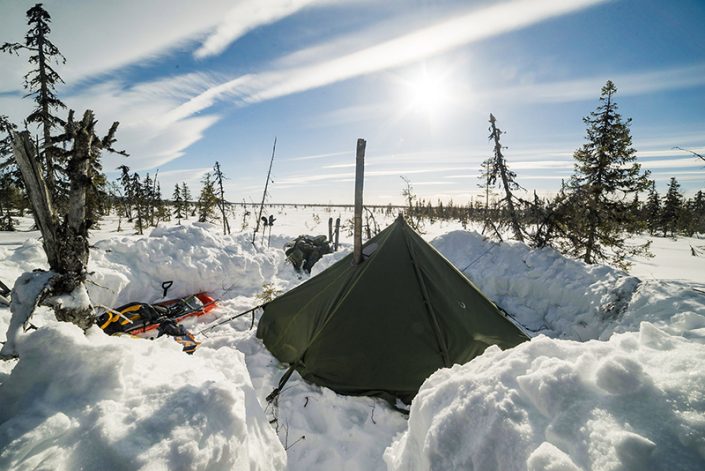
Hawu 4 -tent in Muddus National Park, Sweden.
Camping and family tents are ideal for scouting activities, families, and general group use, such as winter hiking trips where it often makes more sense to use one larger tent rather than several smaller ones. A large tent also provides extra comfort when camping at a campsite or during basecamp-style adventures.
For trekking, however, it’s better to choose a lighter tent, as carrying a heavy tent over long distances can be uncomfortable. Backpacking tents are typically lighter than camping tents and are designed to withstand harsher weather conditions. In this blog post, we’ll focus more on tips for selecting a trekking tent.
As alternatives to tents, we also offer hammocks and tarps for shelter. However, in this post, we’ll concentrate on questions specifically related to tents.
Tent size – number of occupants
When buying a tent, one of the most important criteria is the number of occupants, which determines the tent’s size. To make this easier, we’ve added convenient filters on our tent page that allow you to select a tent based on the number of people it can accommodate.
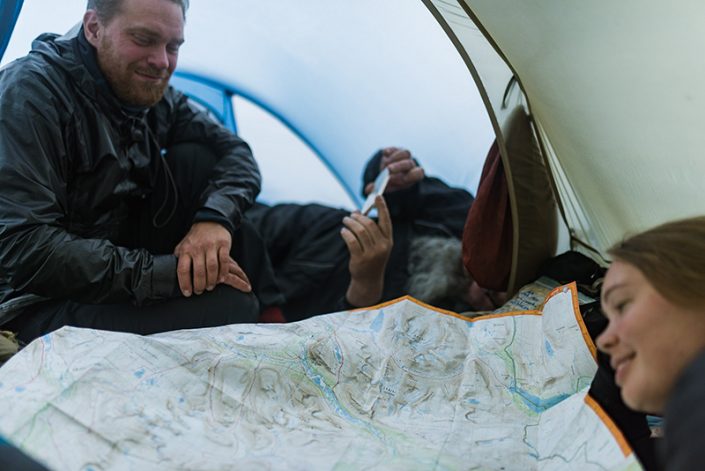
The number of occupants can vary between trips. For instance, some trekking adventures might involve sharing a shelter with a friend, while others are solo journeys. In such cases, it’s worth considering whether to compromise by purchasing a tent that suits multiple situations or investing in separate shelters for different needs.
You don’t always have to buy a tent with the “exact” capacity. Many tent models come in different sizes for various occupant counts, and the weight difference between a two-person and a three-person tent is often minimal. It’s worth considering the option of getting a three-person tent for two people—by adding just a bit of weight, you gain extra interior space and significantly enhance comfort.
Spacious or small vestibule?
The vestibule refers to the tent’s entryway space. It can be used for storing gear, cooking, or even sitting together to enjoy breakfast or wait out the rain.
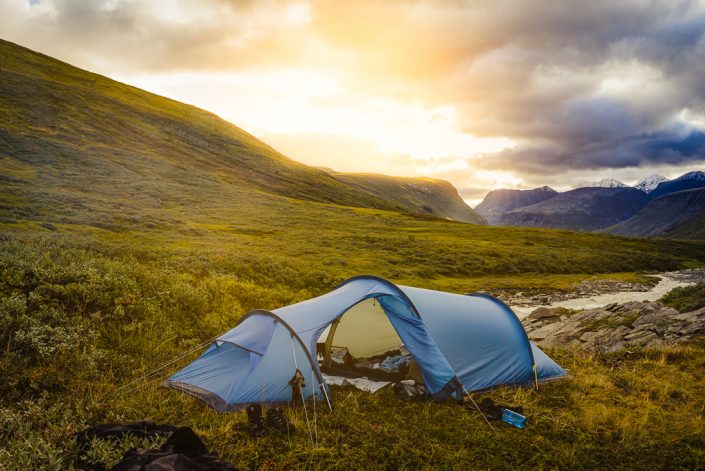
Fjällräven Abisko Shape 3 in Sarek National park, Sweden.
A large vestibule provides ample space for storing gear and allows careful cooking. While manufacturers generally don’t recommend using stoves inside a tent, it can be safe if ventilation is ensured and the stove is used with caution.
Separate inner and outer tent or an all-in-one design?
Dome tents come in two different designs. One features a separate inner tent with poles inserted inside the inner structure. The other option has the inner and outer tents attached, with the poles threaded through pole sleeves on the outer tent.
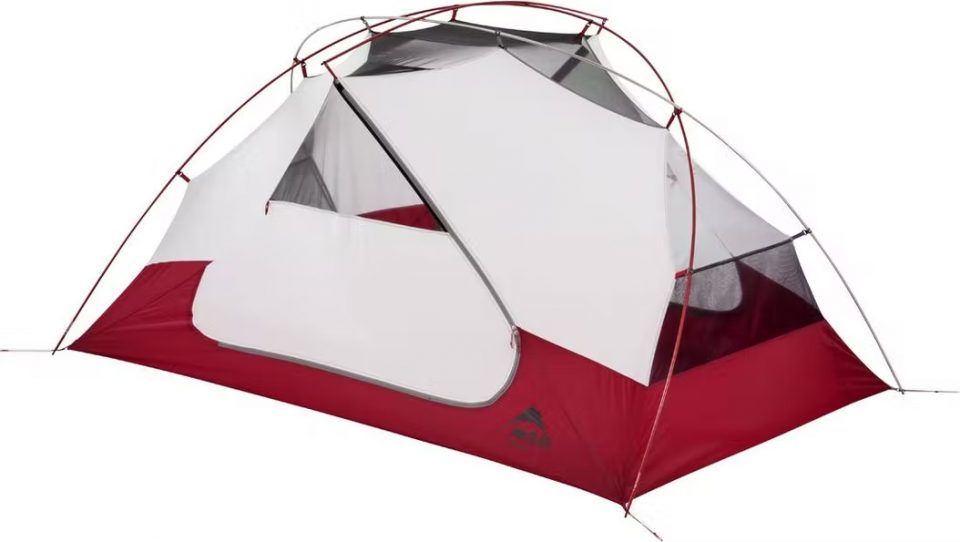
For example, in the MSR Elixir tents, the poles are attached to the inner tent, meaning the inner tent is set up first, followed by a separate waterproof rainfly. During hot summer weather, the tent can be used with just the inner tent for maximum ventilation, while still providing protection against mosquitoes.
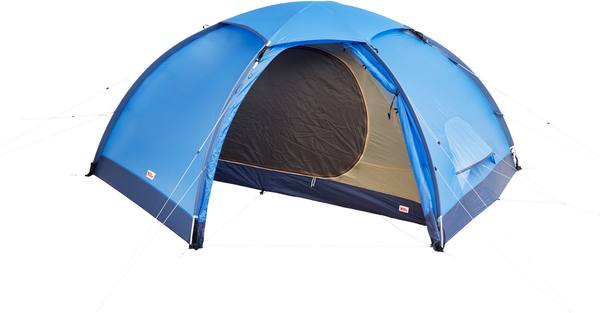
In some dome tents, like the Fjällräven’s Dome -tents, the poles are threaded through the pole sleeves on the outer tent, allowing the entire tent to be set up at once. This can be particularly useful in rainy weather, as it minimizes the chance of the inner tent getting wet during setup. While the inner tent can be detached from the outer tent, it cannot be pitched on its own without the outer tent.
In tunnel tents, the poles are almost always inserted into sleeves on the outer tent.
Tunnel tent or dome tent? Which one is better for you?
The most common question is whether to choose a tunnel or dome tent. Both designs have their pros and cons.
Tunnel tents are likely the most popular tent type in the Nordic countries. They feature a spacious vestibule, offer an excellent space-to-weight ratio, and, when pitched with the wind direction in mind and securely anchored with tent stakes and guy lines, they can withstand strong storms. However, tunnel tents are relatively long, which can sometimes make it challenging to find a large enough flat spot for pitching at a campsite.

Fjällräven Abisko Shape 3 tunnel tent worked on a windy Sarek trip.
The advantage of dome tents is their freestanding structure, allowing them to be set up without stakes, for example, on rocky surfaces or wooden platforms. Dome tents also tend to have a smaller footprint, making it easier to find a suitable spot in tight spaces. However, the vestibule in dome tents is usually quite small or sometimes nonexistent.
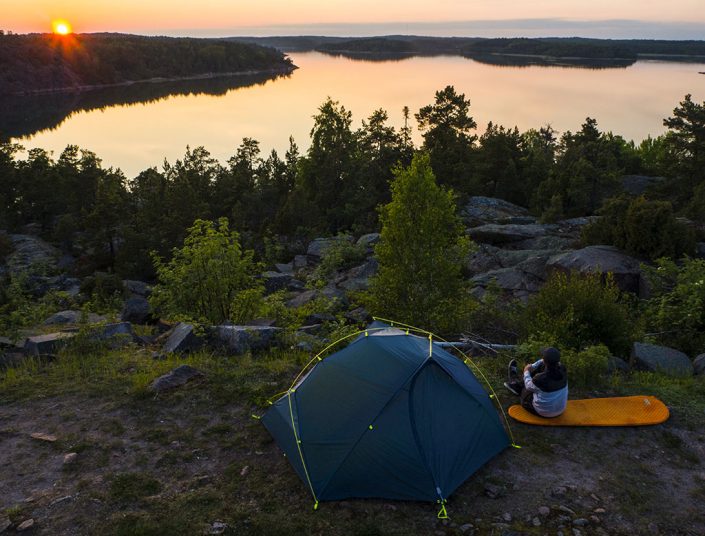
Tent weight is very important when backpacking
The weight of a tent is an important factor to consider before making a purchase. Weight plays a significant role on trekking trips with long daily hikes and when the camp is moved daily. A lightweight and compact tent is also highly beneficial for cycling tours and similar activities.

When choosing a trekking tent, it’s essential to check its weight, as a lightweight tent is much more comfortable to carry on long hikes. Pictured is the Fjällräven Abisko Shape 3 tent packed under a backpack without the tent poles.
You can find ultra-lightweight tents in our ultralight hiking gear -section.
Year-round or summer tent?
If you plan to use your tent year-round, consider whether you want one tent suitable for winter use as well, or if you prefer to invest in a lighter tent for summer and a separate one for winter.
Available budget
When considering your budget, keep in mind that a slightly higher initial cost can be a smarter long-term investment. If you plan to use the tent frequently, a cheaper tent may not last as long, or you may end up dissatisfied and buying a new one, leaving the old one unused and gathering dust. On the other hand, if you’ll only use the tent a few times a year, purchasing the most expensive option might not be necessary.
Tent setup and small details
Setting up tents can vary greatly. Even two tents that look very similar may differ significantly in how quickly and easily they can be pitched. Tents also have many small details, such as tensioning ropes, doors, zippers, and ventilation features. On a trek, when you’re tired, any extra hassle can feel frustrating.
After setting up both a more expensive and a cheaper tent of a similar style a few times, you’ll quickly notice, beyond just durability and quality, many small factors that justify the higher price tag.

Tent poles
Tents typically use poles made from one of three materials:
- Fiberglass Poles:
Found in the cheapest tents, primarily designed for camping at designated sites. Fiberglass poles are not the most durable option, they are often difficult or impossible to repair in the field and require replacement if broken. - Aluminium Poles:
Commonly used in trekking tents, aluminium poles are lighter and more wind-resistant than fibreglass. Additionally, they can be repaired during a trek if needed, making them a more reliable choice for serious outdoor use. - Carbon Fiber Poles:
Used in ultra-light tents, carbon fibre poles are more expensive but durable and ideal for those seeking the lightest possible gear.
Other considerations about tents
- Maintenance and Longevity:
The lifespan of a tent can be significantly extended with careful use and regular maintenance. Always clean out debris before packing it up and ensure the tent is thoroughly dried before storing it at home. - Cotton Thread in Seams:
Some tent models use cotton thread in their seams. The thread swells when wet, sealing the seams for waterproofing. Because of this, do not apply a Seam Sealer to a new tent. However, for older tents, Seam Sealer can be used later to reseal seams as needed. - Zipper Care:
Check zippers regularly to ensure no dirt, sand, or mud gets caught in them. Clean the zippers occasionally with a soft brush, such as a toothbrush, to keep them functioning smoothly. - Additional Accessories:
We also offer a range of tent accessories. Some tents are compatible with add-ons like footprints—durable ground sheets placed under the tent. Footprints protect the tent floor from rough or rocky surfaces and help keep moisture out when camping on wet ground.
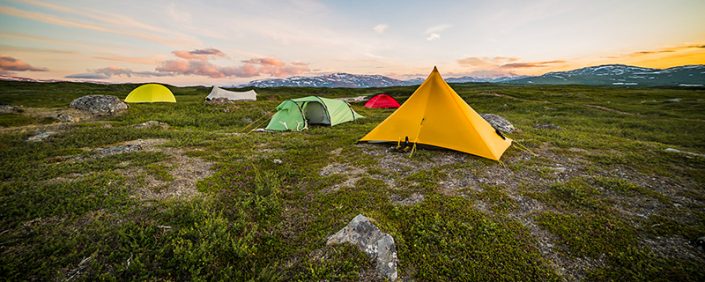
There are many different types of tents available on the market, at a wide range of prices. Choosing the right tent can feel overwhelming at first, but that’s where our outdoor experts can help. Our stores always provide advice and guidance for buying a tent.
From here you can find all our backpacking tents.
Welcome to shop in our online store and physical stores!
Posted: 27.3.2020Modified: 20.1.2025